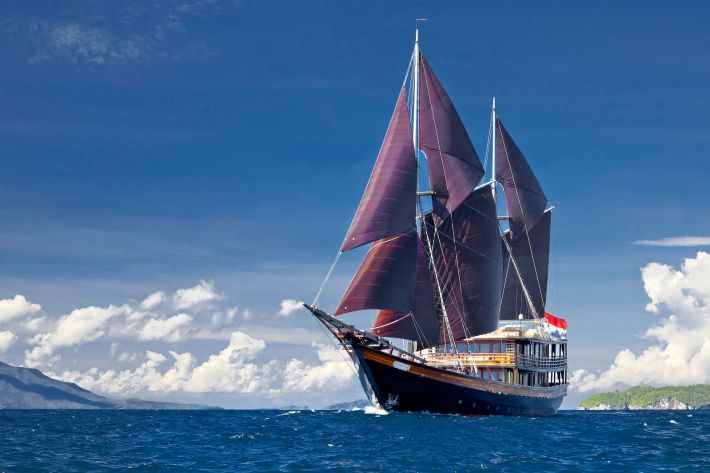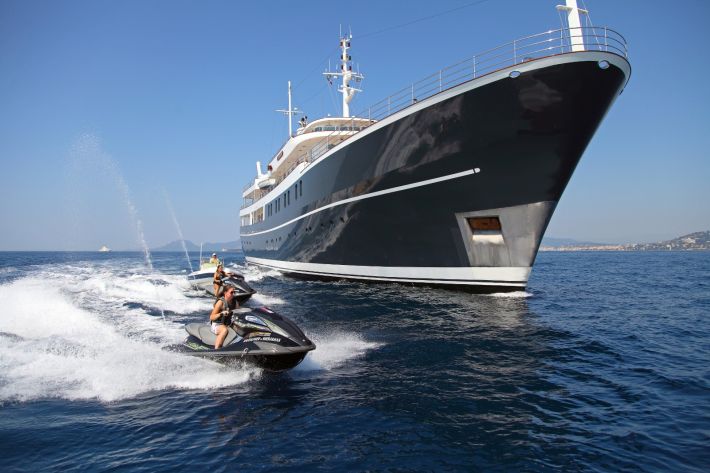…continued from page 1
Long-time explorer and owner Jan Verkerk of Sherakhan has traversed the globe on board his 70m explorer yacht…
“Grytviken, an old Norwegian sealing and whaling town where you can see all the abandoned whaling equipment, is particularly interesting. But the most impressive place is Andrew’s Bay, where you can see thousands of penguins and a few elephant and fur seals too.” Verkerk has spent many hours swimming in the crystal-clear waters of Papua New Guinea. “Irian Jaya [also known as West Papua] has the world’s most beautiful diving spots.”
New yachts are being made specifically with the adventurer in mind. Last year saw the launch of Damen’s SeaXplorer with the latest Polar Code, enabling it to make journeys through the Arctic simpler, with a double-acting hull that cuts through the ice. Meanwhile, governments are opening up previously inaccessible areas. Cameron Bray of Bray Yacht Management is a member of a government-backed group led by Superyacht Australia, working to provide greater access to the Great Barrier Reef for larger yachts. The group is also trying to carve a smoother pathway for foreign-flagged yachts to charter. “There is currently a mechanism in place for foreign-flagged yachts to charter in Australia, however, it is still quite complex. Our aim is to streamline this process as we see reducing these barriers to entry for charter as a major contributor to the growth of the superyacht industry here.”
Should you head off the beaten track there are precautions that should be observed. Tyrone Van Berg, captain of a 60m motoryacht, says preparation is key. “You need to assume that you are not going to receive any support from local agents and suppliers and, therefore, the more variables you plan for, the better off you will be.
“We were once sent to Mozambique and our port of call was Pemba, which is as rural Africa as you can get. Depending on your guests’ needs, you might find very little in terms of provisioning and what you get, you cannot be certain is not contaminated.
“Another time, our petrol reserves were running low for tenders and it took up to a week for us to receive barrels from Maputo as the local petrol stations could not supply us with any, so now we have 2,000-litre tanks on board and take four extra 200-litre barrels with us,” he says.
From a safety standpoint, Carl Fereday of maritime security experts Veritas International says as yacht owners push further afield there are “different precautions to mitigate different perils”. There are safety issues in some regions, and Fereday says that should you require security on board, particularly if spending time ashore in remote regions, “choosing someone with the right kind of experience is essential. Seeking local knowledge is also vital and can be one of the simplest ways to avoid hostilities, by showing respect to the local elders or chief of that region, perhaps in asking for permission to anchor or simply paying them a visit”.
But one need not be put off. Van Berg concludes: “We ensure we have a minimum of two weeks’ fresh food and a decent amount of dry products with the owners’ private office on standby should we need to fly in additional provisions. I believe that the same applies today as in the old days with Sir Ernest Shackleton. You need to think of every eventuality and take preventive measures to ensure you and your crew are well prepared for whatever might materialise.”
See the original article here

